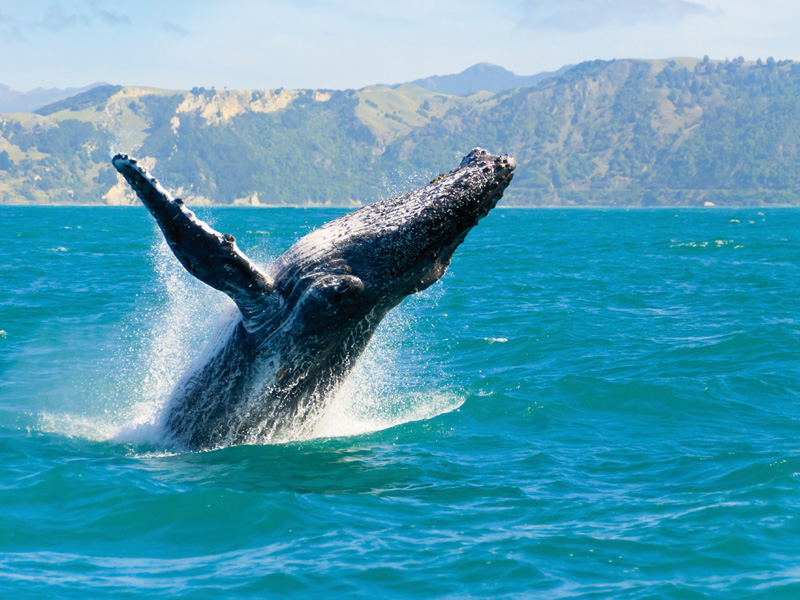Why do Whales Migrate?

Different Migration of Species of Whales
The simplest explanation for whale migration is diet and whale breeding. During the warm months of the year whales migrate to cold waters where the food is, then, when the weather becomes colder and the food scarce, whales will migrate to warmer water for mating and breeding. Although there is a massive variety of whale breeds, they all follow vaguely to the same migration pattern.
Blue Whales
In winter, blue whales are commonly found in warm, tropical waters (to breed and give birth) and in Summer they commonly live in cool, polar waters to feed.
Most Blue Whales are migratory and during their migration travel thousands of Kilometres annually between their winter breeding grounds and the tropics where they mate and give birth.
During blue whale migration, back to the tropics for the winter months they are segregated by sex and age. The older and pregnant whales migrate first while the immature whales bring up the rear.
Amid this migration back to the tropics, they eat virtually nothing for at least 4 months and live on their bodies reserves. Females give birth in tropical waters because the baby whales only have a thin layer of blubber to keep them warm.
Females give birth to a single calf about 7m long and weighing 2.5 tonnes. The whale calves are suckled for 7 months and follow their mothers on the spring migration towards the polar seas.
Once weaned, a whale calf will begin to feed on krill and start to follow the normal migration cycle.
FACT: Generally, the largest and oldest blue whales migrate the furthest north.
Humpback Whales
Like the blue whale the Humpback whale has a similar migration in that Humpbacks spend their Winter months in warm tropical waters (to breed and give birth) and travel back to their habitat in the cooler polar waters during Summer.
Most Humpback whales make mammoth journeys every year between their feeding and breeding sites. Because seasons are reversed either side of the Equator, Northern and Southern Hemisphere populations of humpbacks probably never meet.
FACT: Humpback whales can travel at speeds of 5 m/ph. but, during their long journey they average only 1 m/ph. socialising and resting along the way.
Not all members of a population will travel together however. For example, the humpbacks that pass the eastern shores of Australia, on their way to the summer feeding grounds of Antarctica each year, will stop off in the warm waters of Hervey Bay.
The first to arrive there are groups of older juveniles, followed by mature males and then mothers and calves.
Reasons for Seasonal Migration
Why do whales embark on seasonal movements?
Some major contributors are;
- Climate Changes
- Water Temperature
- Depth
- Salinity
- Topography of Ocean Floor
- With the biggest factor being abundance of food.
